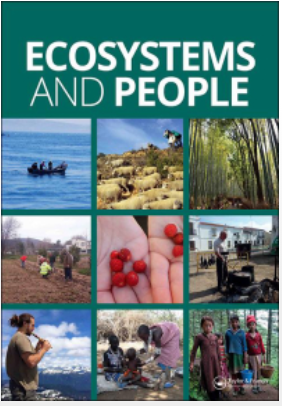促进潘塔诺斯德中央生物圈保护区红树林生态恢复的参与性进程(塔巴斯科,墨西哥)
IF 3.7
Q1 Agricultural and Biological Sciences
引用次数: 7
摘要
生态系统恢复正成为全球退化地区恢复的当务之急,特别是在热带地区。社会参与是恢复过程成功的基础,但需要更好地记录。本文描述了与墨西哥塔巴斯科潘塔诺斯德中央生物圈保护区(PCBR)的两个当地社区共同开发的参与式红树林恢复过程。El Palmar和Tembladeras两个社区都依赖红树林提供的众多生态系统服务,项目的前提是让他们密切参与恢复过程的各个阶段。在规划阶段,与PCBR当局和参与社区的对话使我们能够:(1)评估当地的需求和利益,以确定项目的可行性;(2)进行社会和生态诊断;(3)对恢复行动作出决策。在技术支持下,社区成员自己在实施阶段执行恢复行动。在El Palmar,人们重新造林了相当于160公顷的面积,种植了17038个根霉的繁殖体。在Tembladeras,他们人工清理了4942米的自然河道,重建了34.7公顷的水流动态。在进行这些活动的同时,还为社区成员举办了四个培训讲习班,重点是生态系统服务、生态恢复过程和监测技术。在项目组的指导下,社区成员在恢复行动实施四个月后进行了初步监测。当地社区在所有阶段的参与对于促进社会生态系统的整体和可持续的恢复进程和促进对红树林提供的各种服务的更多认识是至关重要的。本文章由计算机程序翻译,如有差异,请以英文原文为准。
Fostering a participatory process for ecological restoration of mangroves in Pantanos de Centla Biosphere Reserve (Tabasco, Mexico)
ABSTRACT Ecosystem restoration is becoming an urgent global priority to recover degraded areas, especially in tropical regions. Social participation is fundamental for the success of restoration processes, but it needs to be better documented. This article describes a participatory mangrove restoration process developed with two local communities inhabiting Pantanos de Centla Biosphere Reserve (PCBR) in Tabasco, Mexico. Both communities, El Palmar and Tembladeras, rely on numerous ecosystem services provided by mangroves, and the premise of the project was to closely involve them in all phases of the restoration process. During the planning phase, dialogue with PCBR authorities and the participating communities allowed us to: (1) assess local needs and interests to determine the project’s viability; (2) perform social and ecological diagnostics; and (3) make decisions regarding restoration actions. With technical accompaniment, community members themselves executed restoration actions during the implementation phase. In El Palmar, people reforested an area equivalent to 160 ha with 17,038 propagules of Rhizophora mangle. In Tembladeras, they manually cleaned 4,942 m of natural channels to reestablish water flow dynamics across 34.7 ha. These activities were done in parallel with four training workshops for community members focusing on ecosystem services, ecological restoration processes, and monitoring techniques. With guidance from the project team, community members conducted initial monitoring of restoration actions four months after implementation. The local communities’ participation in all stages was fundamental to promoting an integral and sustainable restoration process of the socio-ecosystem and fostering greater awareness of the full range of services mangroves provide.
求助全文
通过发布文献求助,成功后即可免费获取论文全文。
去求助
来源期刊

Ecosystems and People
Agricultural and Biological Sciences-Ecology, Evolution, Behavior and Systematics
CiteScore
7.80
自引率
11.30%
发文量
40
审稿时长
42 weeks
期刊介绍:
Ecosystems and People is an interdisciplinary journal that addresses how biodiversity and ecosystems underpin human quality of life, and how societal activities and preferences drive changes in ecosystems. Research published in Ecosystems and People addresses human-nature relationships and social-ecological systems in a broad sense. This embraces research on biodiversity, ecosystem services, their contributions to quality of life, implications for equity and justice, and the diverse and rich ways in which people relate to nature.
 求助内容:
求助内容: 应助结果提醒方式:
应助结果提醒方式:


